All things considered, the Philippines has made a major stride when it comes to health care in the country with the passage of the Universal Health Care bill. One province who stands to benefit is Northern Samar. While the province has moved to higher ranks on the income distribution scale, these improvements have been blunted by several factors, including transportation difficulties (limitation in land travel and difficulty in crossing bodies of water especially during typhoons) and preference of traditional treatment modalities over biomedical or formal medicine. These, among others, were some of the results highlighted in an exhibit launched September 20 at Areté’s Art Management lobby.

The exhibit explores the various health strategies and interventions employed in the rural area of Northern Samar

A collaboration among Ateneo de Manila University’s Department of Sociology and Anthropology, the Ateneo School of Medicine and Public Health, United Kingdom’s Keele University and the provincial government of Northern Samar, the “Stories of public health through Local Art-based Community Engagement” or SOLACE is an interdisciplinary research focused on public health initiatives and clinical interventions. It brought together researchers from different disciplines: medicine, art and humanities.
Over a period of 10 months, the SOLACE team established 2 health hubs in Catarman and Laoang in Northern Samar and engaged in ethnographic and creative fieldwork activities. Data culled revealed 4 themes: access to health care; experiences of health care; shame and health seeking behavior; and politics in health.
“Access to healthcare can be interpreted in a literal and metaphorical sense. We have unearthed several challenges in the way the Waray face to physically reach the nearest health unit or access the health services they need,” said Dr. Lisa Dikomitis, SOLACE principal investigator. This lack of human resources, she said, affects the provision of healthcare.
Essentially, Dikomitis said, health care access is influenced by 4 factors: personal [heightened by personal and relational barriers], physical (limitations in transportation], financial, and political (health governance and financing.
Dr. Lisa Dikomitis and Dr. Jose Jowel Canuday provide details of the research collaboration
With regard to healthcare experiences, Dr. Jose Jowel Canuday, chair of Ateneo’s Department of Sociology and Anthropology noted how the Waray use both formal and alternative medicine.
“They have a very clear understanding of the different categories of traditional healing …formally- trained physicians and traditional healers co-exist within the communities but not within the skepticism from both ends.”
Medical pluralism, it seems, is embedded in the culture. As Dr. Canuday said, “The Waray do not consciously distinguish between the professional, popular and folk sectors of healthcare.”
The third theme that was drawn from the research – shame and health seeking behavior, dwells on the “indigenous sense of shame.”

Students are encouraged to share their definition of what health is
“By keeping their illnesses hidden, shame renders their health conditions invisible, consequently adding extraneous pressure to a government health delivery system already reeling from perennial lack of resources,” said Canuday.
This revelation, he said, is connected to the fourth theme: politics in health.
The provision of funds is enmeshed in the everyday play for power. “The data provides new insights into how various factors such as political maneuvering, conflict and corruption, have, for the most part, negatively affected the efficiency and immediate provision and delivery of health care services in the rural areas of Northern Samar,” said Dikomitis.
Research findings translated into movement by the dancers of SFC Lahing Kayumanggi
One of the objectives of the SOLACE project was to translate research findings into creative and artistic outputs. The highlight of the exhibition launch was a dance performance that fused gathered data, music from the province, and movement sequences inspired by stories from the field. The performance was curated by SOLACE project manager and dance anthropologist Clarissa Mijares. A video recording is also available for viewing at the exhibition proper.
The exhibit is on view at the Areté’s Art Management lobby, third floor until October 8, 2018.





